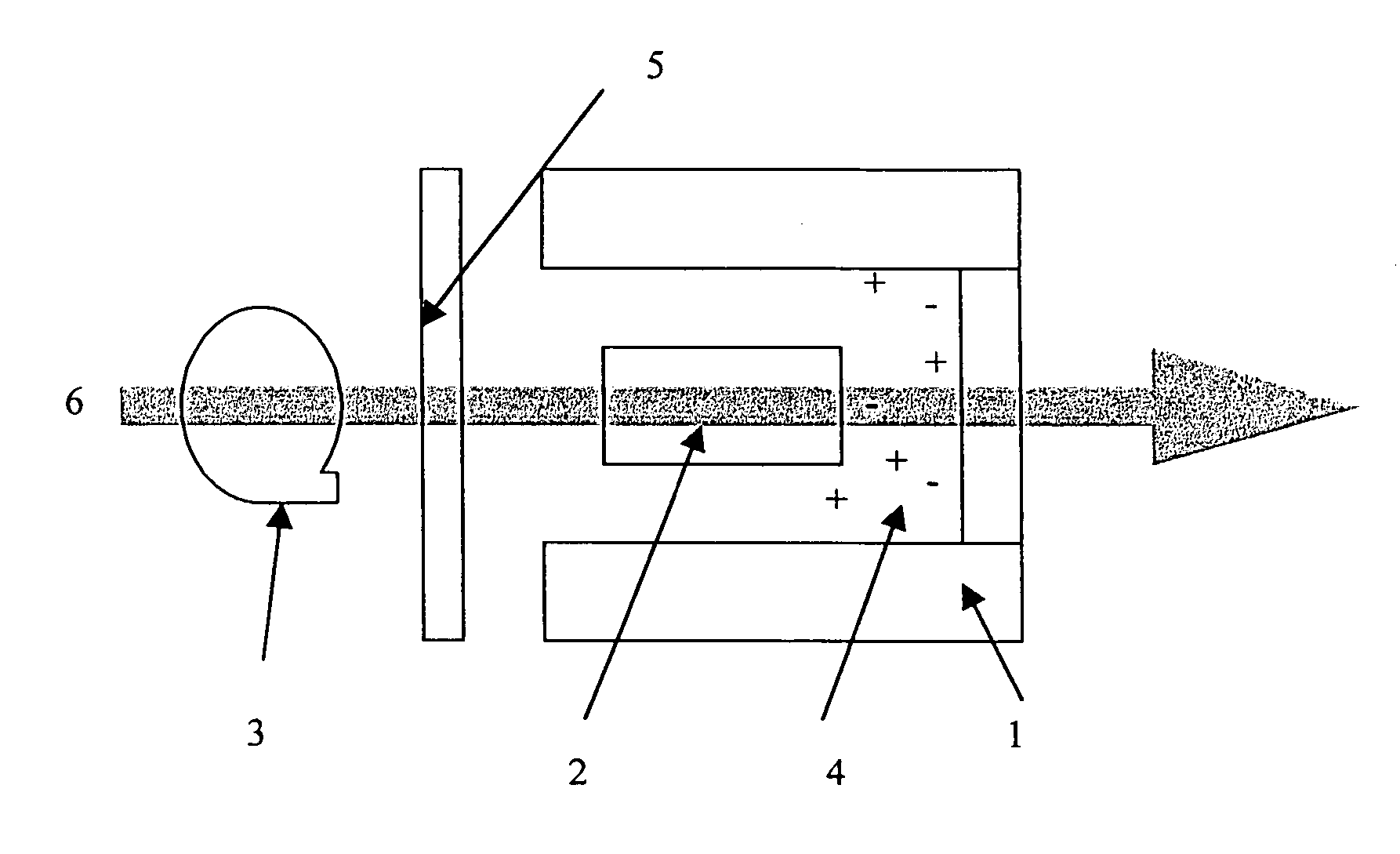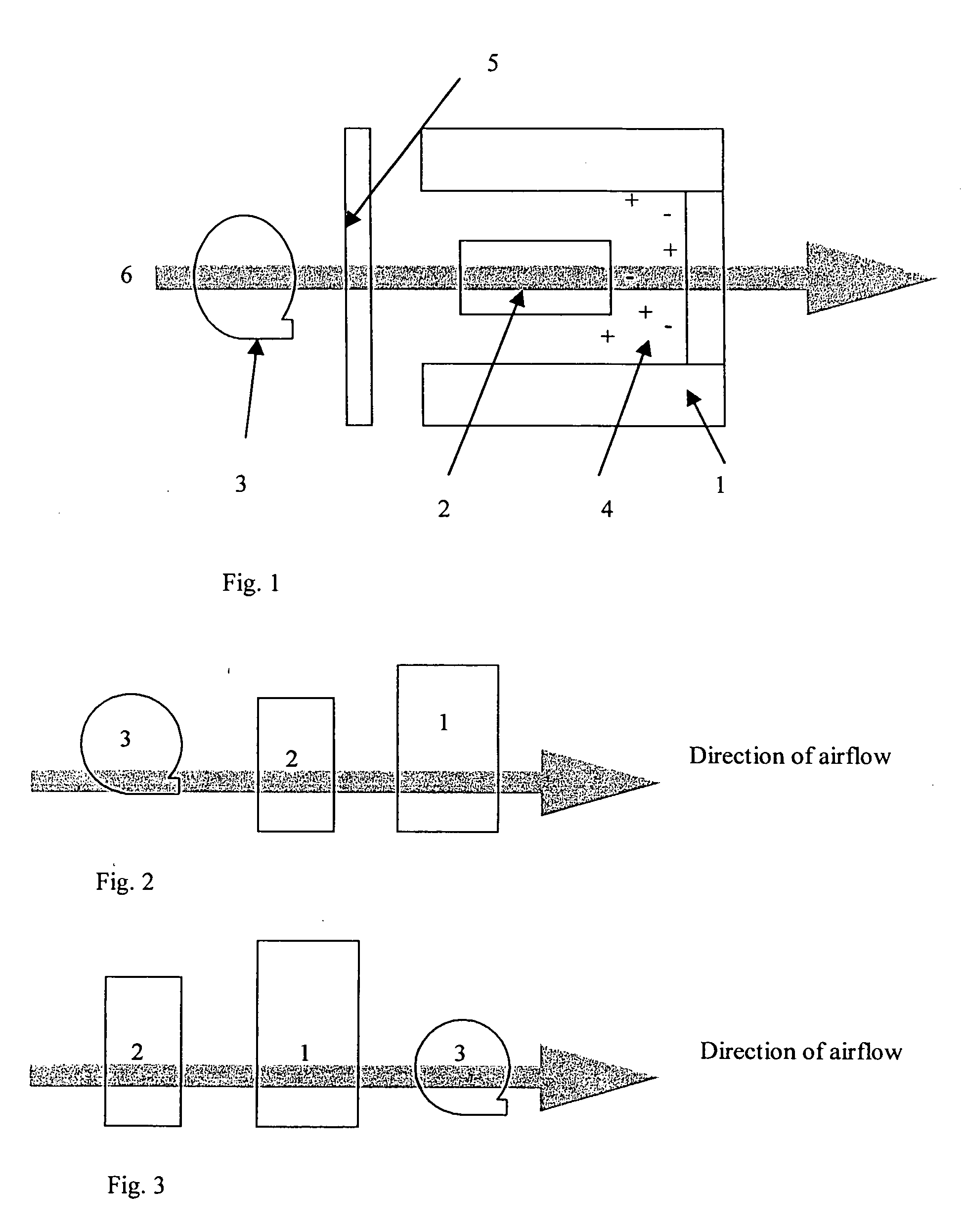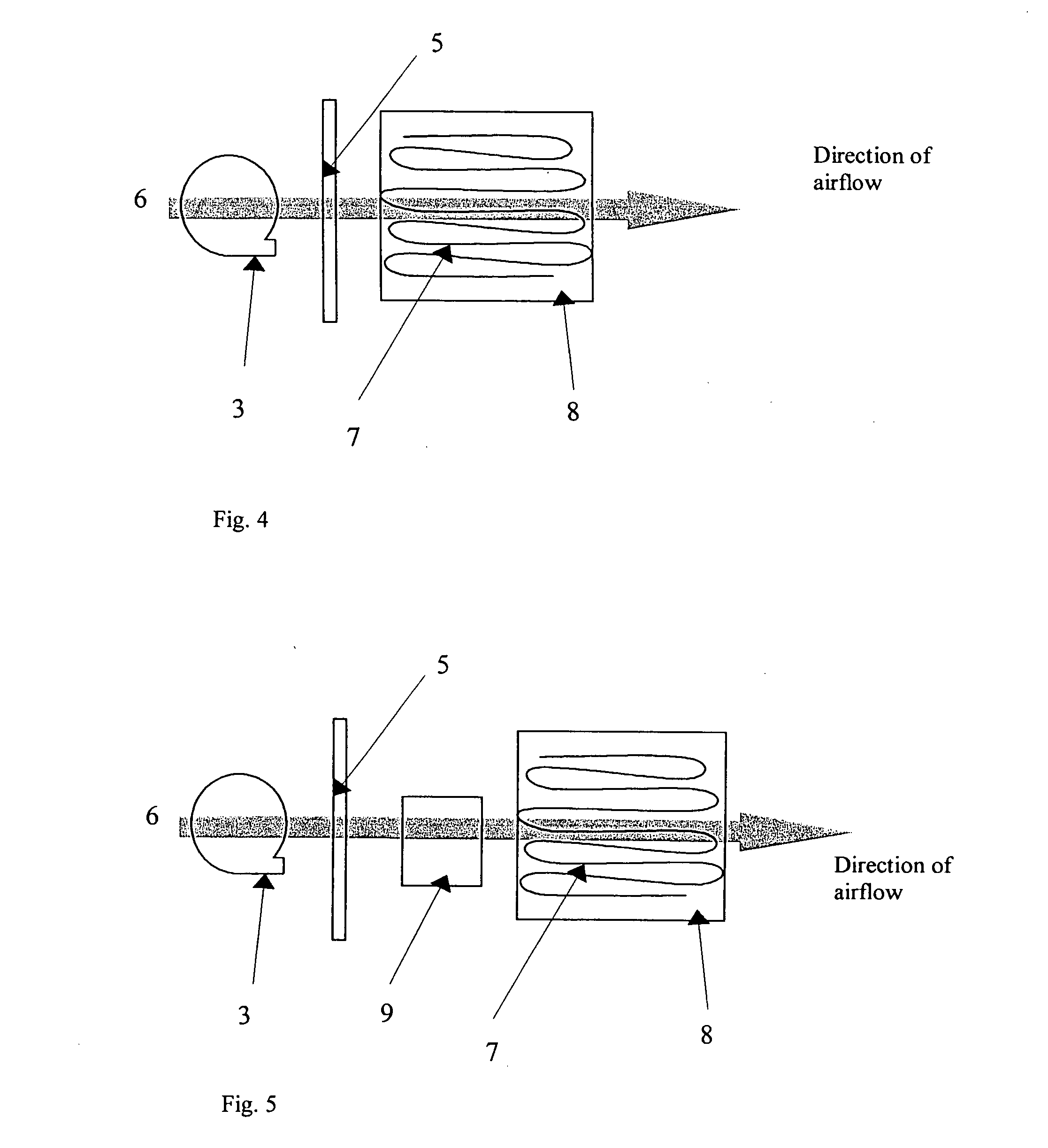Air cleaner filter system capable of nano-confined catalytic oxidation
- Summary
- Abstract
- Description
- Claims
- Application Information
AI Technical Summary
Benefits of technology
Problems solved by technology
Method used
Image
Examples
Embodiment Construction
[0019] In one embodiment, (FIG. 1) the present invention includes zeolite pellets with size varies from 2-6 mm, in either granular or cylinder form is packed into a porous enclosure (1) with an ionizer (2) fitted in the middle. Air is drawn into the middle hollow area by a fan / blower (3) and then forced through the zeolite filter while carrying charged ions (4). The system is airtight with the exception of the entrance area and exit area. A UPLA filter (5) is fitted at the entrance area in order to pre-treat the incoming air (6) and prevent large particles of dust in the incoming air from interfering with the effectiveness of the other devices, or igniting in the high temperatures of the electrical circuits. In the embodiment, the arrangement of the fan, zeolite, and ionizer can be modified to any arrangement such that the ionizer is placed before the zeolite filter. The zeolite filter could be at thickness from 0.5 inch to 3 inch depends on the area to be treated. The fan / blower wi...
PUM
| Property | Measurement | Unit |
|---|---|---|
| Pore size | aaaaa | aaaaa |
| Pore size | aaaaa | aaaaa |
| Electric potential / voltage | aaaaa | aaaaa |
Abstract
Description
Claims
Application Information
 Login to View More
Login to View More - R&D
- Intellectual Property
- Life Sciences
- Materials
- Tech Scout
- Unparalleled Data Quality
- Higher Quality Content
- 60% Fewer Hallucinations
Browse by: Latest US Patents, China's latest patents, Technical Efficacy Thesaurus, Application Domain, Technology Topic, Popular Technical Reports.
© 2025 PatSnap. All rights reserved.Legal|Privacy policy|Modern Slavery Act Transparency Statement|Sitemap|About US| Contact US: help@patsnap.com



